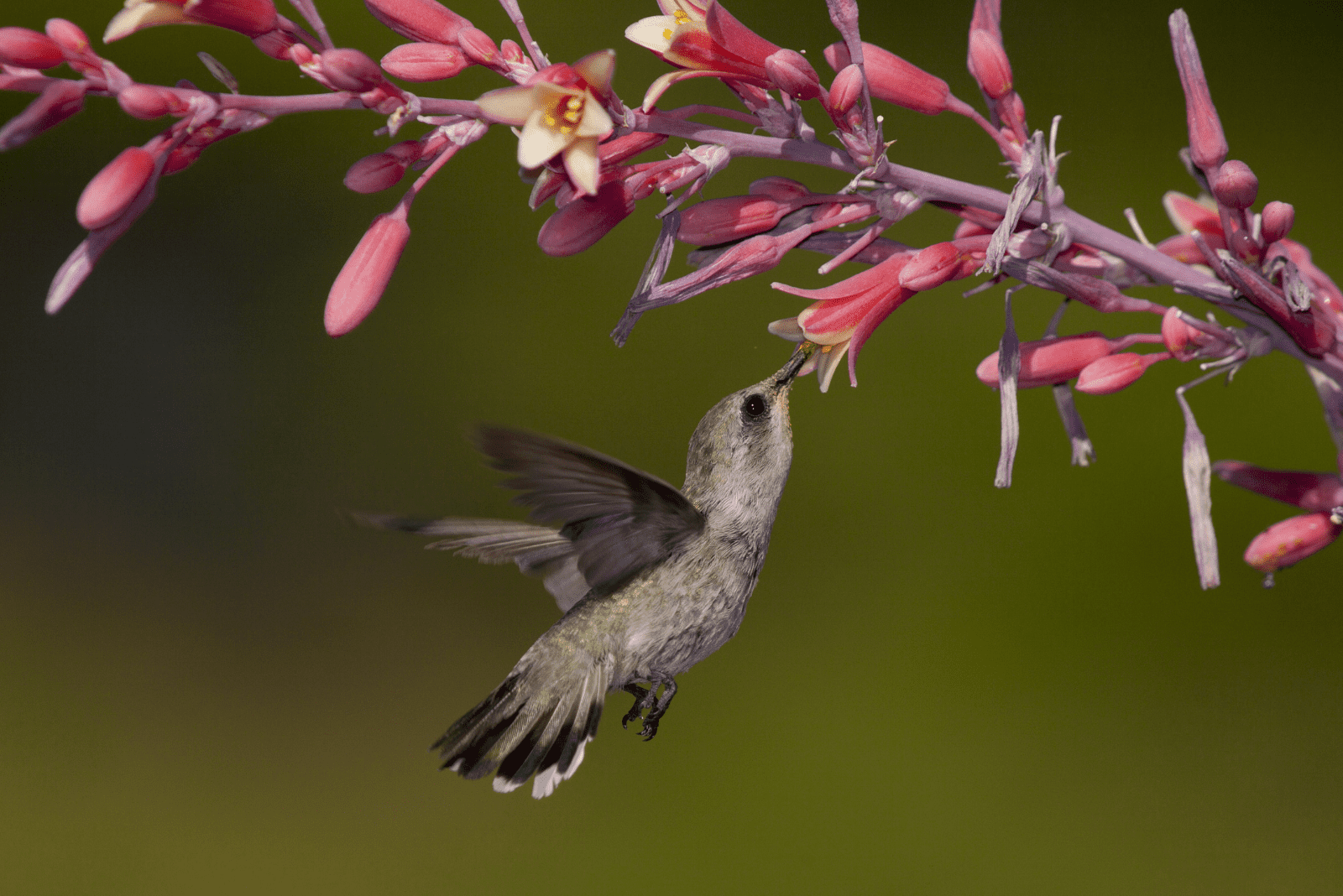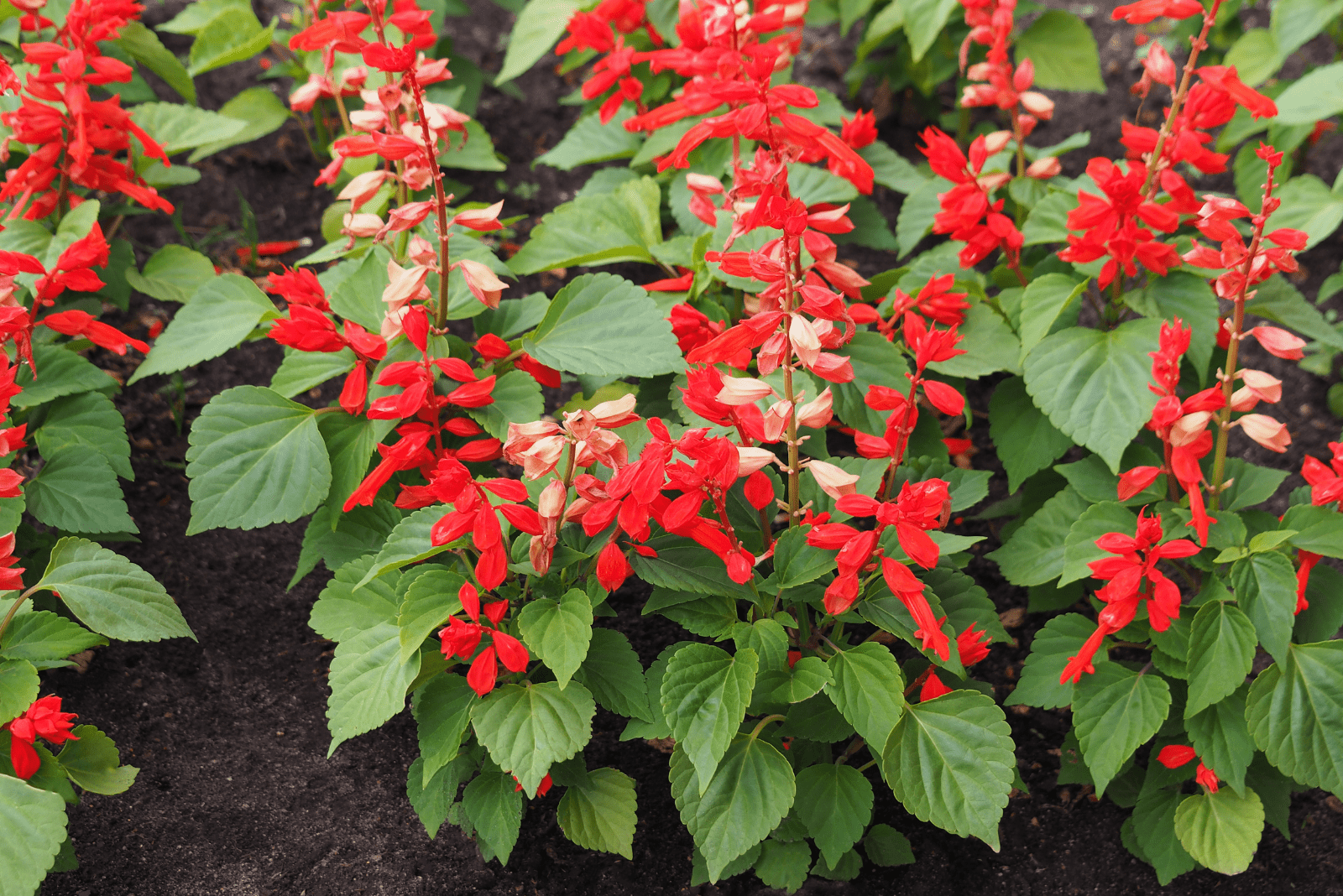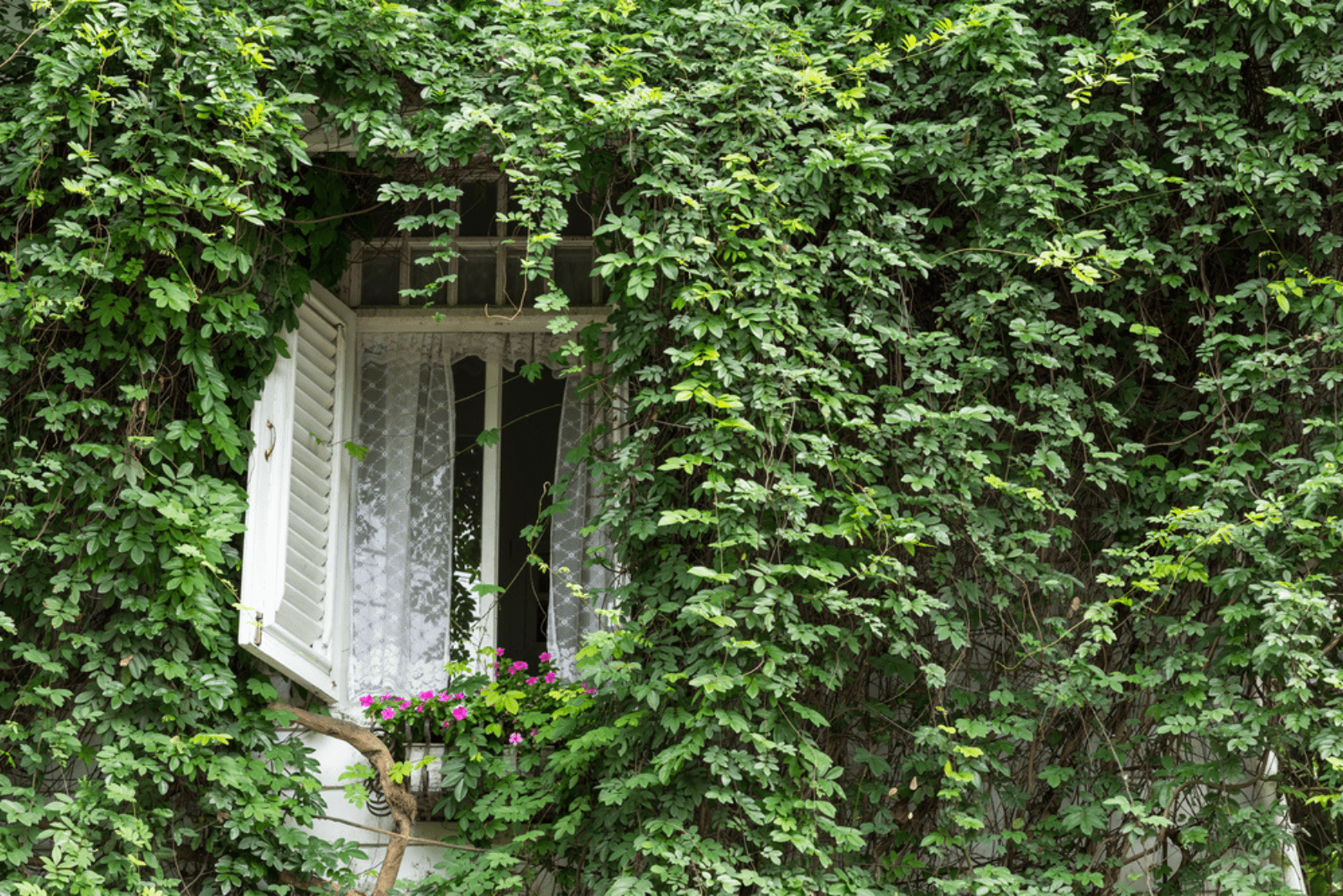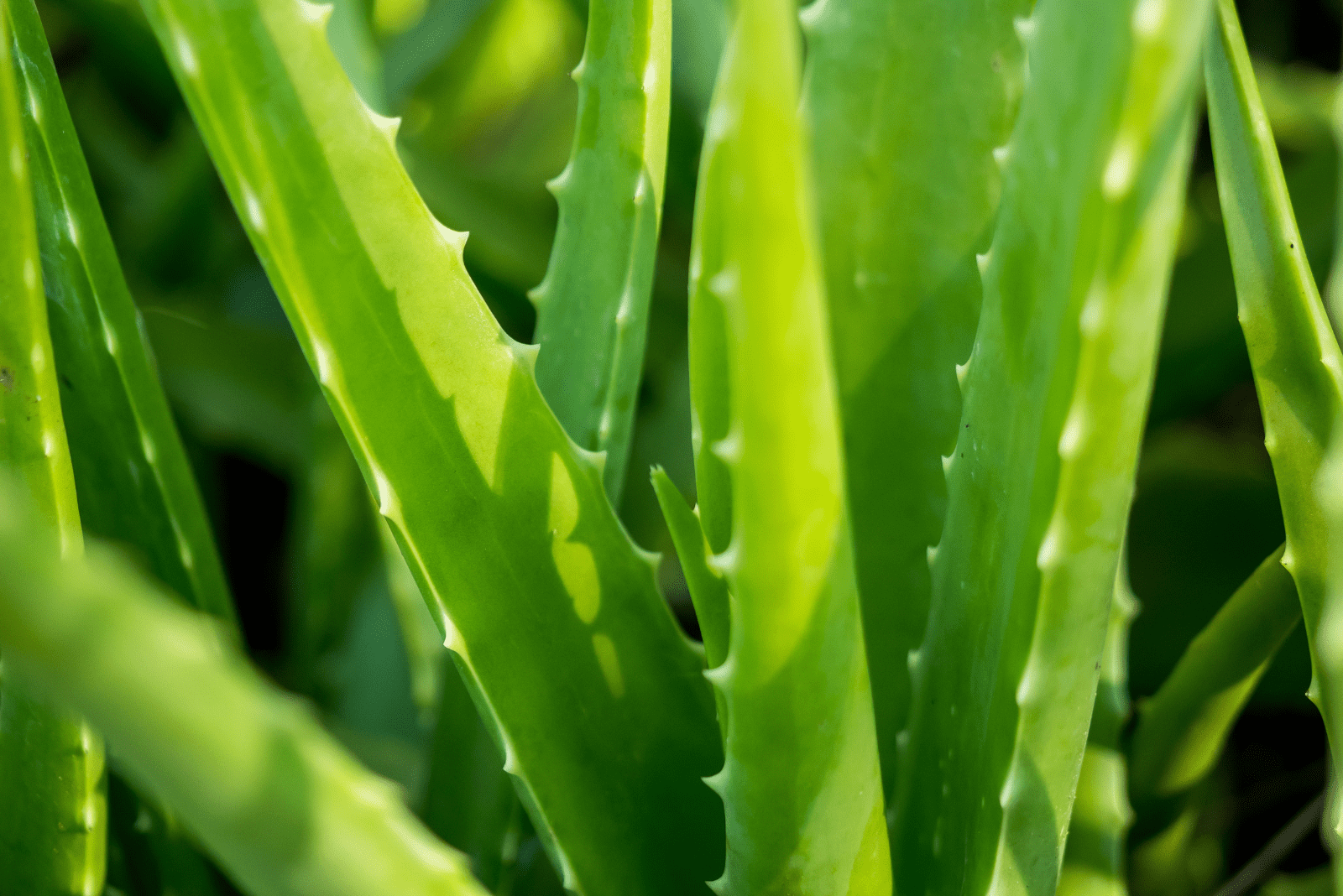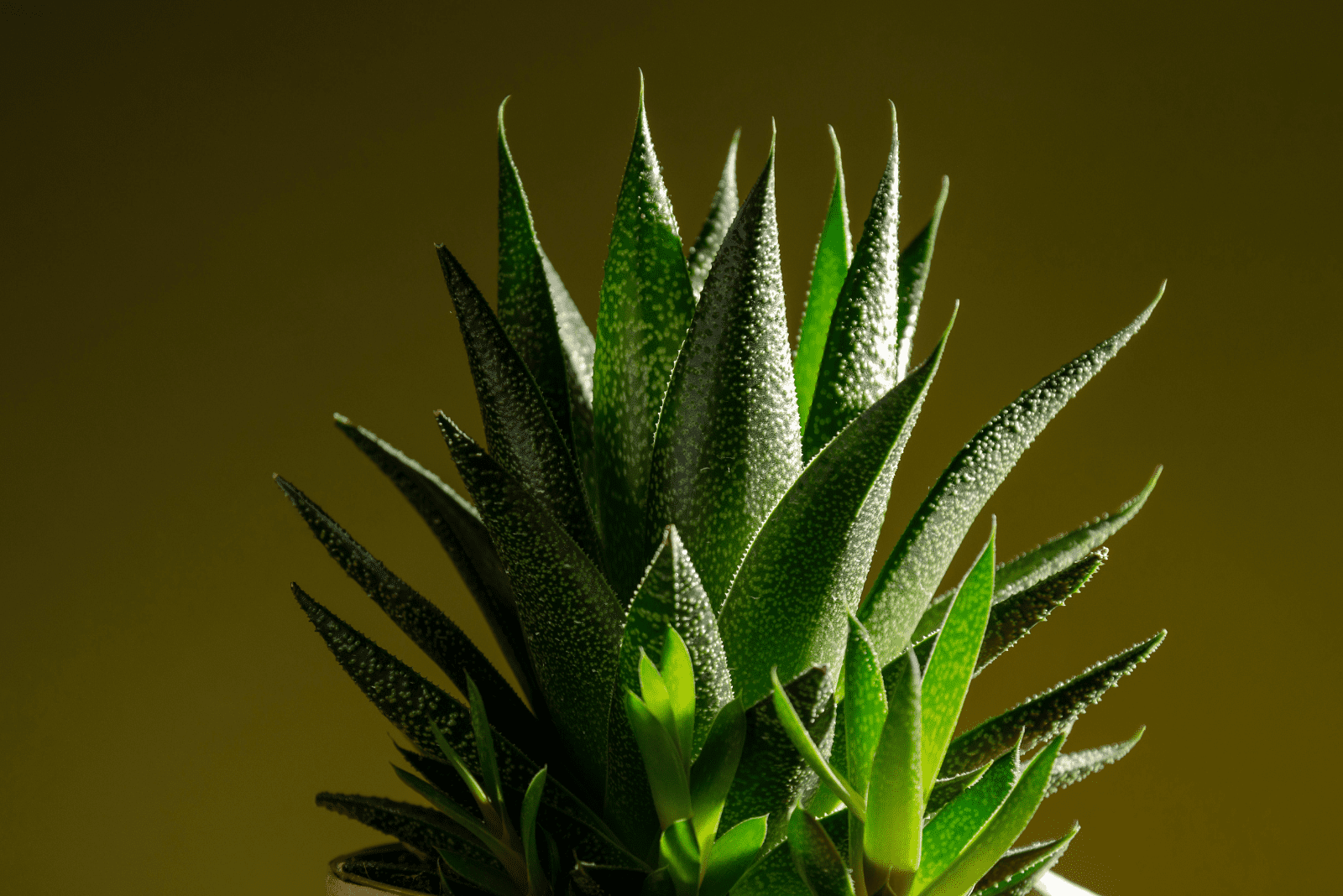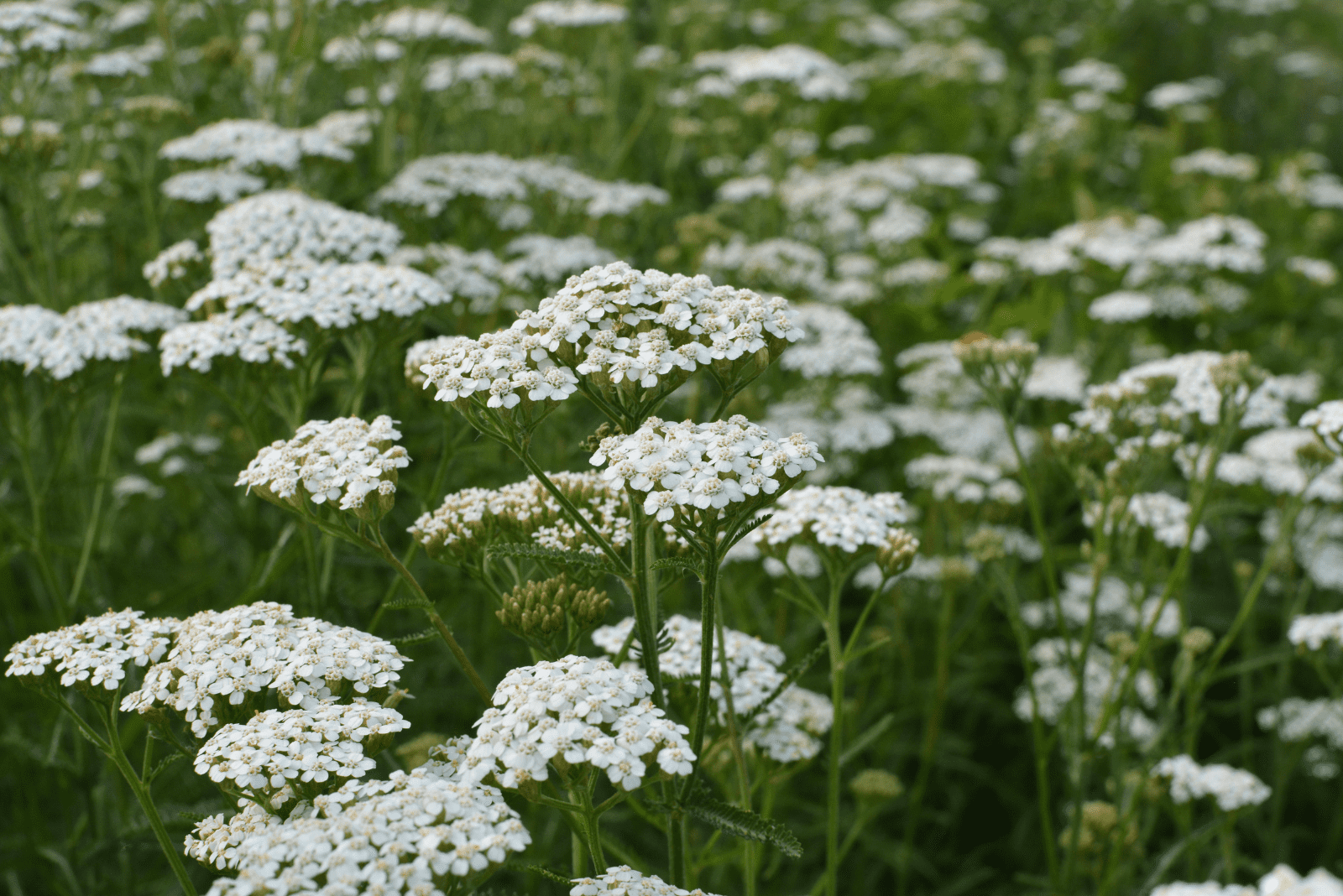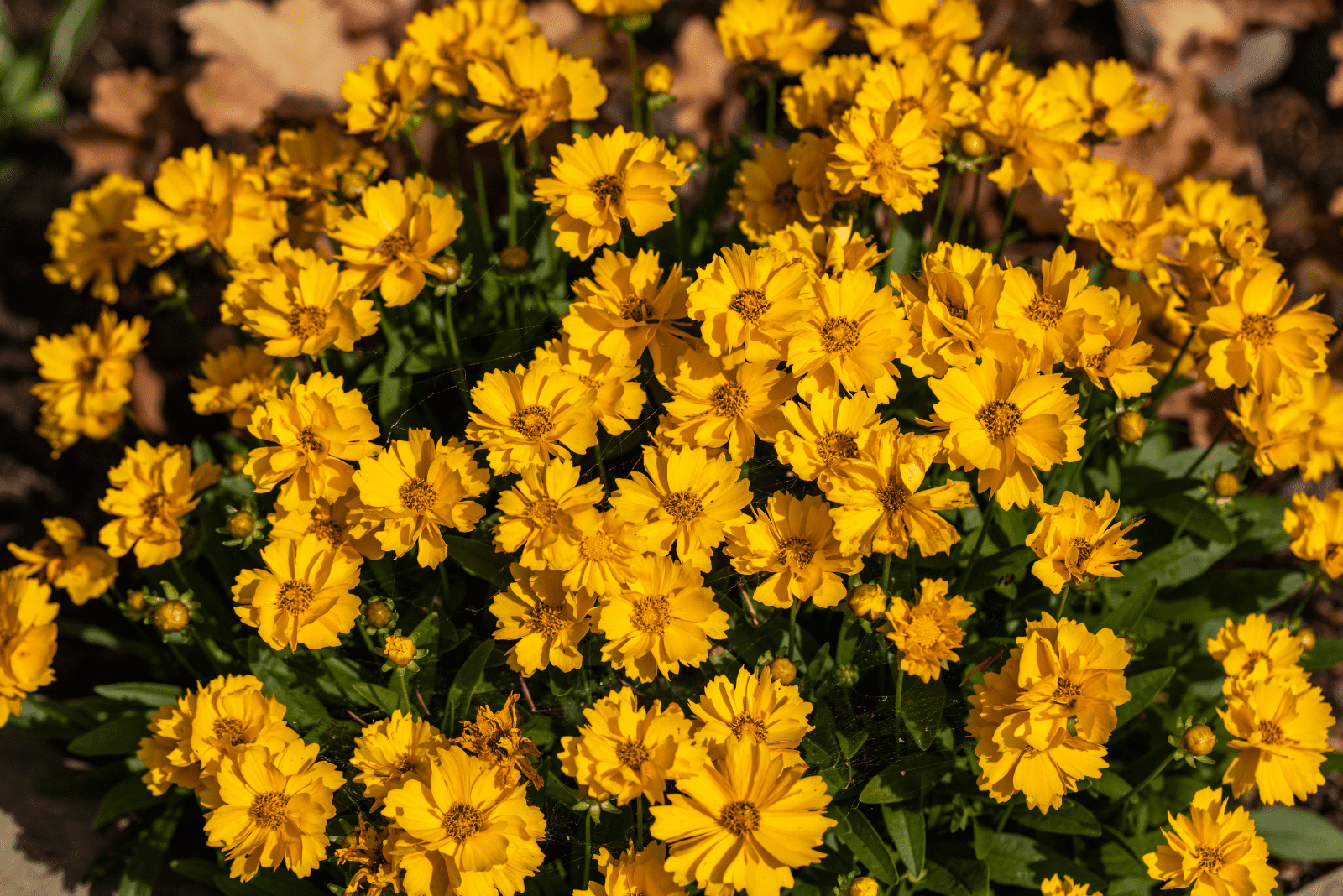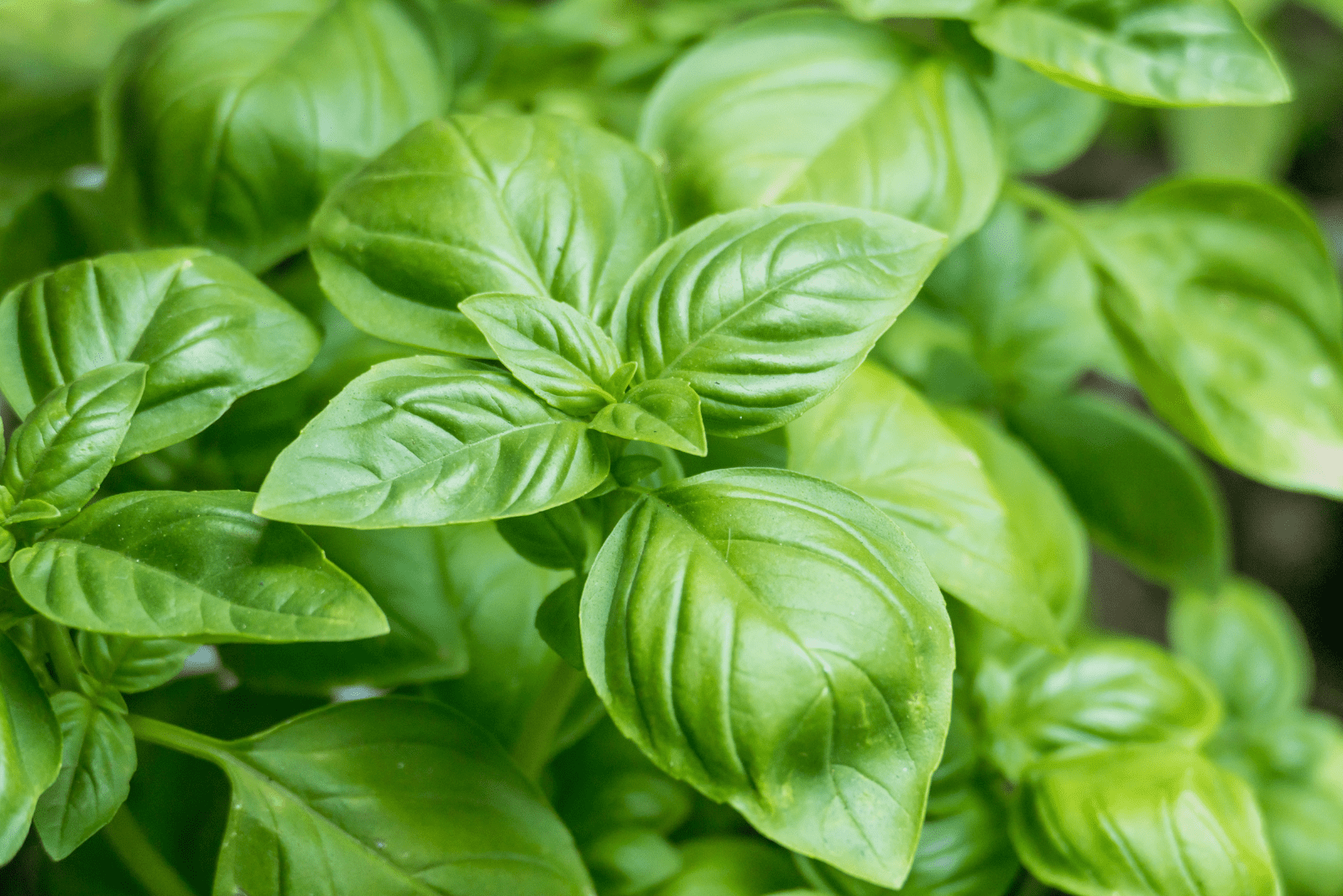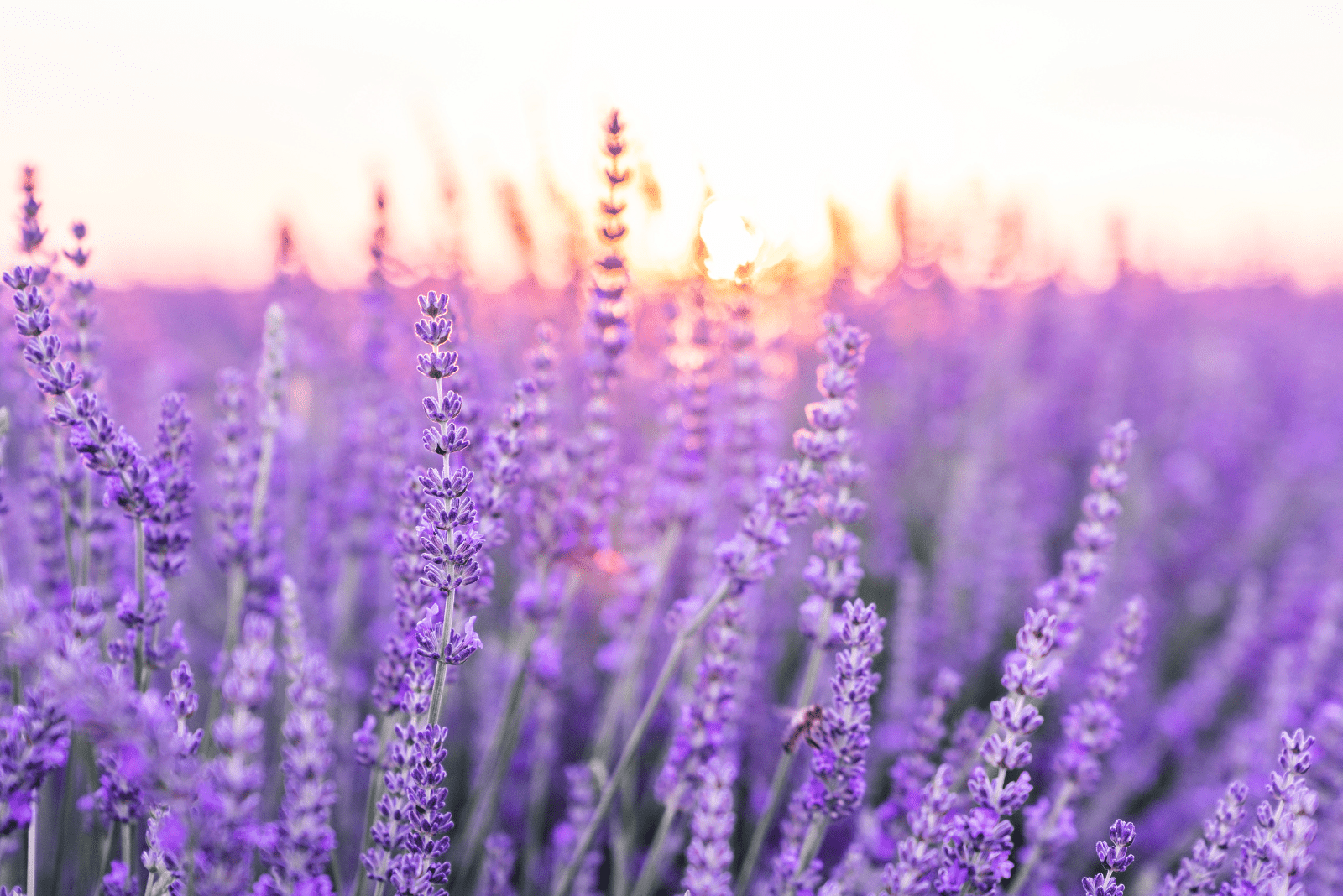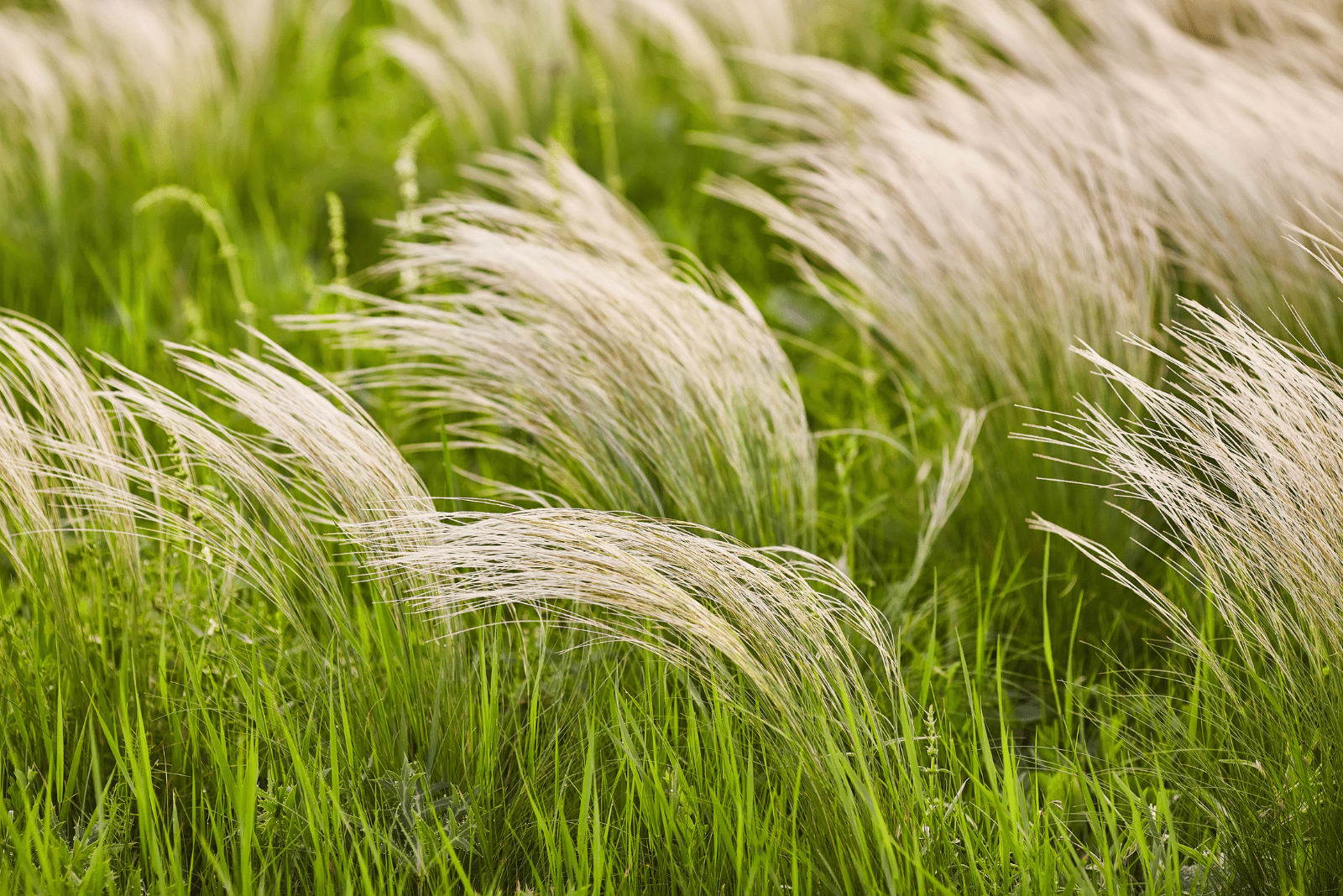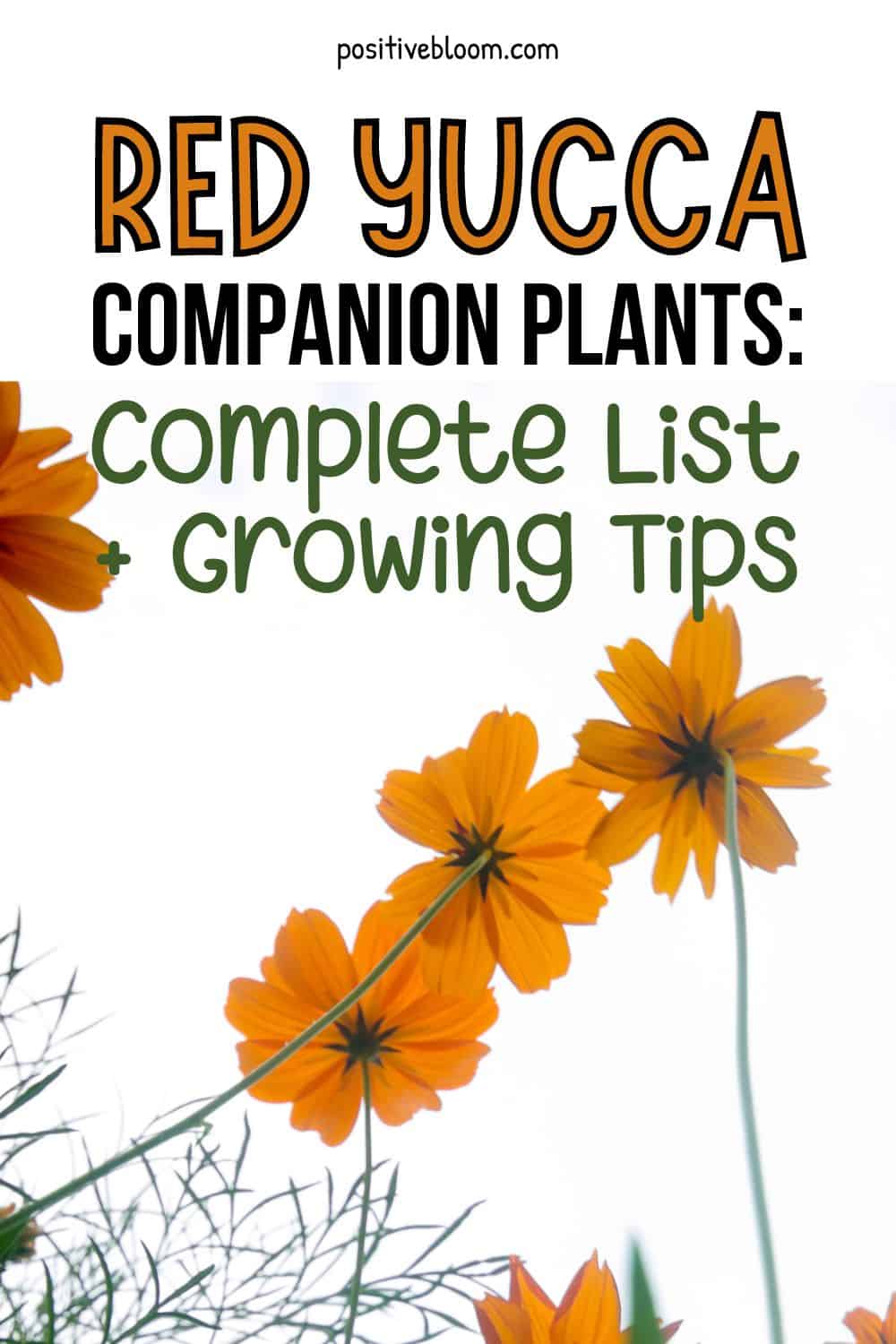Red yucca is a beautiful plant that looks perfect when planted en masse.
Companion planting has loads of great benefits, and involves plants with similar requirements forming a symbiotic relationship.
The red yucca is an excellent companion plant and a great addition to any garden, so we’re going to learn about the best red yucca companion plants to pair with your red yucca, as well as some tips for growing them.
Before we move on, here’s some basic info:
[table id=254 /]
Let’s get started!
Red Yucca Companion Plants
Some of the best plants to grow with red yucca include Texas sage and other herbs like lavender and basil, English ivy, aloe vera, and cactuses such as agave and sedum. Yarrow, coreopsis, and some types of grasses also make great companion plants.
Let’s take a closer look!
Texas Sage
Planting red yucca and Texas sage next to each other eases plant maintenance, and when choosing plants for our gardens we should aim for those that require similar conditions.
These two thrive in the same conditions, so planting them near each other is a great idea.
Texas sage is a fascinating plant, and its purple flowers perfectly combine with yucca’s tubular flowers.
Here is some basic info about this plant:
[table id=255 /]
How To Grow Texas Sage
This herb will grow well in full sun, partial shade, and full shade.
Because of this feature, Texas sage is an essential component of landscape design, and incorporates vibrant pops of color into any space. It can even link separate regions with various lighting conditions and the same kind of flower to provide a more cohesive design.
You should avoid growing sage if your garden is constantly pooled with water. In any other case, sage will grow just fine.
Sand, clay, or loam can all support sage’s growth.
Sage is relatively drought-tolerant, which means it will forgive you if you forget to water it. If you live in a climate with frequent rainfall, you shouldn’t water your sage.
Sage loves hot summers, but remember that frost can kill it!
There is no need to fertilize your sage because it will grow well without food. However, if you notice that your yucca isn’t growing or has stopped producing flowers, I recommend performing a soil test.
English Ivy
English ivy is a beneficial plant to grow with yucca because it improves soil and air quality. It can also withstand drought, which makes it the perfect plant for gardens with scarce water resources.
However, this plant is considered invasive in some areas, so please consult with professionals before you start growing it.
Here is some basic info about English ivy:
[table id=256 /]
How To Grow English Ivy
Hedera helix thrives in partial to full shade. This plant is often grown as a groundcover because it can thrive in complete shade. At the same time, other grasses can struggle growing in the same conditions.
This evergreen should be grown in well-draining, loamy soil.
If you live in particularly dry climates, I recommend adding mulch to the soil to help water retention.
Be careful with watering your English ivy because it is sensitive to both soggy soil and overly dry soil.
My recommendation is to check the soil moisture before you water this plant. If the topsoil is dry, proceed with watering.
The ideal temperature for European ivy ranges from 70 to 90 degrees Fahrenheit, so don’t leave it outdoors during hot summer days and also keep it away from cold winter winds.
Feed your common ivy plant approximately twice a month with a balanced 20 20 20 fertilizer.
Your common ivy can sometimes come under stress for many reasons, such as high soil temperatures, and it may produce fewer leaves in these cases, so I recommend avoiding fertilizing your English ivy until you figure out what’s wrong.
Aloe Vera
Aloe vera and red yucca are great plants to grow next to each other. First, aloe improves soil quality, and your red yucca will greatly benefit from this.
Aloe is also a great pest repellent, and will keep away those naughty pests that could inhabit your yucca.
Both aloe and yucca attract pollinators and beneficial insects, so adding them to your garden is an excellent idea.
And guess what’s even better? Both plants thrive in similar conditions!
Here is some basic info about the aloe plant:
[table id=257 /]
How To Grow Aloe Vera
Bright, natural light is essential for the growth of this succulent. Give it up to 6 hours of direct sunlight outdoors and ensure it gets shade in the afternoon.
This perennial has delicate leaves that can quickly be burned by direct sunlight. On the other hand, low light may weaken the leaves and make them wrinkle. Additionally, aloe leaves may bend if the light levels aren’t adequate. If you notice any of these signs, consider relocating your plant.
This plant doesn’t require nutrient-rich soil, so you can purchase a regular cactus soil mix or potting soil with added perlite.
As far as soil acidity is concerned, this succulent isn’t too picky. The pH should be around 6.0, but alkaline or neutral acidity also works well.
Watering may be a little tricky for this succulent. If you water it before the soil drains out, you’ll end up with an overwatered aloe.
On the other hand, if the soil drains out and you wait too long, your aloe will become underwatered.
Don’t worry about the issue of underwatering during winter because your succulent is dormant and doesn’t need watering.
Never grow this plant where the temperature may drop below 40 degrees Fahrenheit as it can kill it.
This plant doesn’t require fertilizing.
Cactus
Both cactus and hummingbird plants thrive in deserts, so it’s not surprising that they make great companion plants.
There are two reasons for it: first, cactuses create shelter for yuccas and protect them from winds. Second, cactuses help the soil stay porous and have good drainage.
I recommend cactus varieties such as echeveria flower, agave, and sedum.
Here is some basic info about cactus plants:
[table id=258 /]
How To Grow Cacti
You’ll need to ensure about 4-6 hours of bright light a day for your cactus to thrive. Be careful because with some cactus varieties the direct sun may burn their leaves.
I recommend positioning your cactus near a sunny window. You can transfer it outside to meet its lighting needs during summer.
A quick-draining soil mixture created especially for cactuses is the ideal environment for growing desert species. However, they also thrive in common potting soil that has been improved with draining materials such as sand, pebbles, or perlite.
Similarly to aloe, cactuses require their soil to dry completely before each watering. Water approximately two to three times a month. Inadequate watering may cause cactus leaves to turn black, so watch out!
The ideal temperatures for cactuses ranges between 70 and 80 degrees Fahrenheit. Nights in deserts are quite chilly (can be lower than 55 degrees Fahrenheit), so make sure to imitate such conditions in your home.
The ideal humidity range for cacti is between 40 and 60 percent, which is pretty simple to attain in most households. In comparison to desert varieties, forest cacti like significantly more humid air. You can spritz your cactus from time to time if you notice it wilting.
Cacti will benefit from fertilizing, so choose a fertilizer designed particularly for these plants.
Yarrow
Yarrow is a good companion plant for your Hesperaloe parviflora. Both plants attract pollinators and are low-maintenance.
The conditions you need to ensure for yarrow plants will also suit your yuccas, which is an added bonus.
Here is some basic info about yarrow:
[table id=259 /]
How To Grow Yarrow
Yarrow is a drought-tolerant plant and a big fan of full sun. If you find a nice spot that receives enough sun, you’ll aid in maintaining compact growth, promote blooming, and fight off fungal infections.
Compared to other plants, it can withstand clay soil easier. Although it thrives in well-draining soil, it does well in a variety of soil types, which means that you won’t need to supplement it with any nutrient-rich materials.
These plants must get an inch of water weekly, frequently provided by continuous rain.
If you live in a dry zone with little rainfall, I would advise watering this plant at least once a week.
On the other hand, the nosebleed plant is quite susceptible to fungi, so be careful not to add too much water.
The best USDA hardiness zones to grow these plants range from 3 to 9. The heat in the hardiness zone 9 is the highest yarrow can actually withstand. Other zones may have higher humidity levels, and your yarrow won’t take it well.
I mentioned that these plants don’t require additional fertilizer, although adding some won’t kill them. The main ‘problem’ with fertilization is that it encourages growth. This sounds great, but yarrow grows aggressively, which is why it’s considered invasive in some areas, so encouraging its growth might not be a good idea.
Coreopsis
Coreopsis is a good companion plant because it attracts pollinators, birds, and butterflies.
You can expect these plants to bloom in early summer when grown as annuals. When they are grown as perennials, they start blooming two years after planting.
Here is some basic info:
[table id=260 /]
How To Grow Coreopsis
The best way to encourage optimal growth and bloom is by providing your coreopsis with at least 6 hours of full sun. When these plants grow in partial shade they produce fewer flowers and may get lanky.
However, if you live somewhere with extremely hot summers, you must ensure some partial shade – especially in mid-summer.
Soil with neutral pH and plenty of loam or sand is ideal for these plants. The great thing about the Coreopsis genus is that it has so many varieties, and some don’t care about soil type at all!
You can ask experienced growers from your area to tell you which varieties are most suitable. I recommend Moonshine and King Edward as you can find these species growing in neglected areas (near highways, for example).
Watering needs for tickseed plants depend on the age of the plant. You’ll need to water new, unestablished plants regularly (they like moist but not soggy soil) and can reduce watering after your tickseed establishes.
Ensure temperatures range from 70 to 80 degrees Fahrenheit during the day and 50 to 60 degrees Fahrenheit during the night.
As far as humidity is concerned, these plants take well to all ranges, so just give them enough water, ensure drainage, and don’t worry about humidity.
You only have to fertilize this plant in cases of extremely poor compost. In these situations, I recommend mixing a little bit of compost into the soil in the early spring.
Herbs
The best herb to pair with Hesperaloe parviflora is Texas sage. Many other herbs also grow well with these plants – basil, lavender, thyme, or mint are all great companions for red yucca. Herbs are known as pest repellents and help plants fight off diseases.
However, don’t plant too many together as they will likely compete for nutrients from the soil.
Let’s learn info about each herb, as well as some tips for growing!
Basil
Here is the basic info on basil:
[table id=261 /]
USDA zones: 3-9
A lot of direct sunlight every day is essential when growing basil. The sun can also help your basil resist diseases and grow stronger.
You’ll need to ensure fertile soil with good drainage. I recommend supplementing the soil for your basil with compost or another type of mulch to ensure it gets enough nutrients.
Mulch can also help the soil retain water. Basil needs regular watering, so anything that helps water retention works great.
Basil is extremely susceptible to frost, so avoid planting it until temperatures are 50 degrees Fahrenheit.
Don’t expect your basil to survive over winter, but you can use row cover if you want to extend the growing season a little bit.
However, you can experiment if you live in climates where frost is uncommon; leave it to self-seed and see what happens next (but lower your expectations).
With herbs like basil we harvest the leaves, so fertilizing is a must! You’ll have to do it frequently if you want to see new leaves.
Lavender
Here is some basic info for lavender:
[table id=262 /]
Sun is the main influence of lavender blooming time. Bear in mind that your lavender won’t grow well (or not grow at all) in partial shade, so the location in your yard is critical.
Don’t overuse organic matter when planting lavender as it will smell way better if grown in relatively poor soil.
A regular potting mix works fine for these plants, but I always add some perlite to help the soil drain better.
Aim for a pH above 6.5 (alkaline) unless you want your lavender to lose its great scent.
Your lavender should be well-watered the year after planting. It can withstand prolonged droughts in the following growing seasons, and remember that receiving too much water might result in fungus and root rot.
Soggy soil is more likely to kill your lavender than frost, so pay attention to humidity. If you are dealing with high humidity, pay attention to the spacing between plants. The more space you ensure, the better the airflow will be.
Grasses
Some grasses can also make good companion plants. The main thing to pay attention to when it comes to these plants is invasiveness.
Before you plant any grass, I advise you to consult with experts.
Let’s look at the best grasses to plant next to your Hesperaloe parviflora.
Mexican feathergrass
First, here is the basic info about this type of grass.
[table id=263 /]
Although pony tails grass can grow in partial shade, I highly recommend planting it where it can get a lot of direct sunlight.
Texas tussock thrives in loamy soil with good drainage, and if you can’t ensure it you can add sand and organic matter to the soil.
This type of grass doesn’t require much water and will tolerate prolonged periods of drought as it enters dormancy.
Bear in mind that extremely hot summers may affect the color, so it would be great if you could control the temperature somehow.
You should add compost to Mexican feathergrass soil once a year. If you fertilize it more frequently it can encourage its growth, and you don’t want it to take over your garden!
Blonde Ambition Grama
Here is some basic info about blonde ambition grama grass:
[table id=264 /]
If you want to grow low-maintenance ornamental grass near your red yucca, blonde ambition grama is a great choice.
This grass adores full sun and will produce a lot of beautiful wheat flowers and bluish-green semi-evergreen leaves. Bloom time for this beautiful grass is in midsummer and late summer.
Blonde ambition grama is a Waterwise plant, so you don’t have to worry about creating a watering schedule as long as the soil is loamy or sandy.
This type of grass isn’t a heavy feeder, so supplementing the soil with a little bit of compost is a great idea!
Gulf muhly
Here is some basic info about gulf muhly grass:
[table id=265 /]
Gulf muhly is undoubtedly one of the most beautiful ornamental grasses because of its spectacular flower color. Provide it with full suns and you’ll see fascinating pink flowers in late summer and early fall!
This plant is perfect for rock gardens and xeriscape landscaping.
As long as you ensure sandy or loamy soil, this grass with pink flowers and amazing yellowish-green leaves will grow perfectly.
Don’t worry much about feeding this grass. It will benefit from a little bit of compost, but it isn’t a must.
The Benefits Of The Red Yucca Plant
We have seen which plants grow perfectly when planted near this Hesperaloe cultivar, but we haven’t told you why you should grow red yucca in the first place!
First off, this is a low-maintenance plant, so if you are a beginner grower the red yucca plant is great for you.
This is a magnificent plant with thin flower stalks and beautiful coral pink flowers.
So why is red yucca called that if it doesn’t have red flowers? When it comes to this plant, it’s a little bit tricky to figure it all out. The first thing is that it isn’t red, the second thing is that it’s not even a true yucca. Third, its scientific name, Hesperaloe, means western aloe.
Regardless of these misnomers, growing red yucca is fun and beneficial.
Mature plants can produce up to 10 flower spikes with a single flower on each.
No wonder hummingbirds are crazy about this plant! As well as hummingbirds, bees and butterflies will also visit your garden if you grow this type of Hesperaloe.
How To Care For Hesperaloe Parviflora
Here is a short care guide for the red yucca plant:
Light: These plants thrive best when given enough direct sunlight.
Temperature: Ideal temperatures for Hesperaloe parviflora range from 65 to 85 degrees Fahrenheit, but they will tolerate cold winters above hardiness zone 5.
Humidity: These plants don’t respond well to high humidity. Anything higher than 30% may damage it.
Soil: This plant requires soil with good drainage, and regular potting soil can be used if you add perlite or sand.
Watering: You’ll need to water this plant regularly after planting, but cut back on watering once the plant is established and don’t let it sit in waterlogged soil. Don’t leave the soil entirely dry either.
Fertilizing: All-purpose fertilizer should be applied before the growing season.
Propagating: You can grow red yucca from seeds or by planting offsets.
Wrapping Up
Now that you’ve read this article and learned all about red yucca companion plants, I’m sure you know which one to grow in your own garden.
Luckily, all these plants are low-maintenance, so if you are a beginner grower you won’t have any issues with any of them.
Good luck with companion planting!
Until next time!
Like this post? Share or pin it for later!

